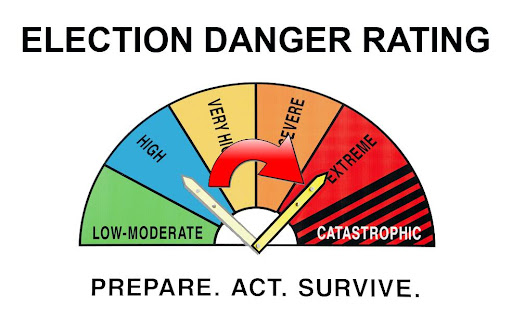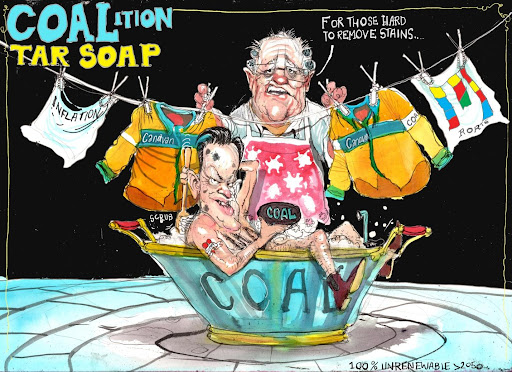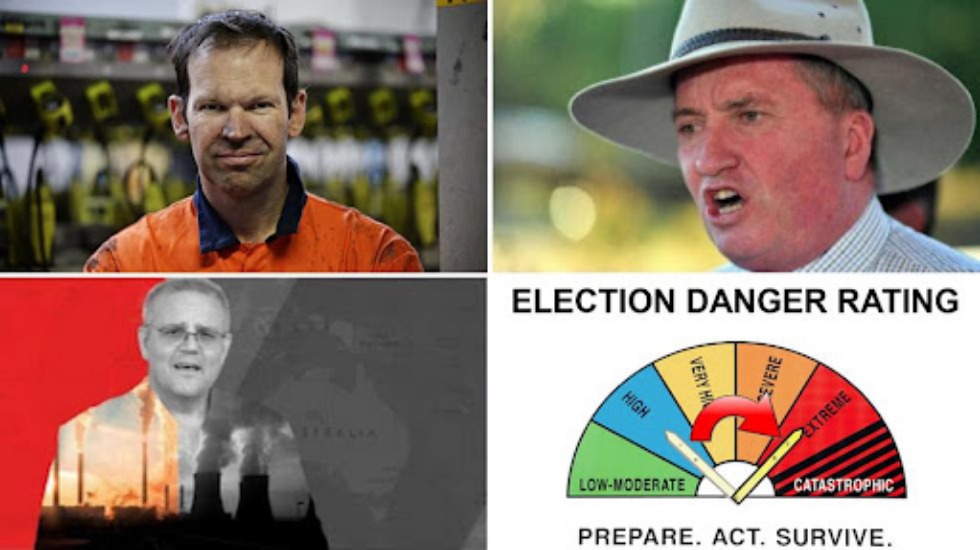Australians have always had a soft spot for larrikins.
“Knockabout rebels with hearts of gold,” the larrikin mythology goes: a far cry from their forebears from the 19th century, who spanned anything from street thugs to hardened criminals.
By the 1980s, politicians and businessmen had appropriated the mantle of larrikin: think Bob Hawke after the America’s Cup win, or John “pig’s arse” Elliott.
More recently still, it’s been appropriated as a culture wars adjunct by lesser public figures like Senator Matt Canavan, whose ‘coal miner’ cosplay (above) is at stark odds with his economics degree and past career as a senior executive at KPMG.
Canavan has never been shy of controversy, drawing the ire of inner-city Australia with this 2018 gem: “The best thing you’ll learn about going to a (climate) protest is how to join the dole queue.”
Not exactly Winston Churchill, but what else would you expect from a coal-faced larrikin?
The problem with being a culture wars larrikin politician is that stirring up trouble is integral to the job description and, sometimes, a throwaway line morphs into an oversized can of worms for the adults in the party room. This brings us to Tuesday, and Canavan’s immortal mid-election campaign line: net zero carbon emissions by 2050 is “all over bar the shouting”.
“This net zero thing is dead,” Canavan added, a certain finality in his tone. The senator’s sentiments were echoed by the LNP’s candidate for the Queensland seat of Flynn, Colin Boyce, a known net zero opponent who declared the target is flexible and non-binding, leaving plenty of “wiggle room”.
Morrison’s net zero “statement” last year was “not binding, there will be no legislation attached to it,” Boyce added.
And just like that, LNP candidates in the hitherto blue ribbon, lately ‘teal marginal’ seats of Goldstein, Kooyong and Flinders (Victoria), Wentworth, North Sydney and MacKellar (NSW), Boothby (SA), Curtin (WA) and others encountered that sinking feeling you get when your electoral danger goes from ‘high’ to ‘extreme’ (below).

That other faux larrikin, Scott Morrison, wasn’t “prepared” (above) for Canavan’s verbal hand grenade, but he did “act”, rushing into his now-familiar routine of damage control in a desperate attempt to “survive”.
“Our commitment to net zero by 2050 is a commitment of the Australian government that I made in Glasgow. It is the government’s absolute policy,” Morrison said.
Is it indeed, Prime Minister? Your mate Boyce let the cat out of the bag (net zero is “not binding, there will be no legislation attached to it”) and it’s not like you haven’t broken the odd verbal commitment over the journey.
Here’s a brief summary of promises broken since 2019: a billion trees in 10 years (by last year, a little over one per cent of that target had been reached); a botched plan to build 47 commuter car parks; a budget surplus by 2020; and crackdowns on social media and religious discrimination (neither came to pass).
PLEASE HELP US CONTINUE TO THRIVE BY BECOMING AN OFFICIAL FOOTYOLOGY PATRON. JUST CLICK THIS LINK.
But the daddy of all broken promises was Morrison’s abandonment of a promised Federal integrity commission (ICAC) with broad powers to combat corruption. “The reasons why (he walked away from this promise) are sitting on his front bench. A national ICAC would look at the money that was paid for land at Badgerys Creek for a new Sydney airport – $30 million for land that was worth $3 million – (and) the sports rorts saga,” Opposition Leader Anthony Albanese said.
With a catalogue of broken promises, an earlier flirtation with pulling out of the Paris Climate Agreement, near-incestuous links to the fossil fuel lobby and a near civil war in the coalition over emissions cuts, how are Australians expected to take Morrison’s “absolute” commitment to net zero by 2050? With a Mount Kosciuszko of salt, I’d suggest.

Cartoon: David Rowe, Financial Review.
Let’s refresh our memories on what’s at stake with net zero. Under the Paris Agreement, Australia and other countries are obliged to keep global temperature rises since pre-industrial times (PIT) to 1.5 degrees Celsius.
Failure to do so by as little as half a degree is forecast to exacerbate disastrous sea level rises, unprecedented summer heatwaves, out-of-control bushfires of the kind we experienced in 2019, further bleaching of the Great Barrier Reef, harder-to-grow agriculture and flooding rains of the sort we witnessed on the east coast in recent months.
Unless someone gags Canavan, Boyce and other potential miscreants before sticking them in the proverbial basement for the next three weeks, it seems Morrison’s plan to placate them with “10s of billions of dollars” in pork barrelling and incentives in exchange for support on net zero (thus, in turn, buttressing the electoral fortunes of LNP members in ‘teal marginals’) has been to no avail.
“Infrastructure and communications” for regional Australia were to supposedly benefit from this splurge, but here’s the kicker: it turns out at least $3 billion of that “infrastructure money” is for an inland rail line from Queensland’s Surat Basin to the port of Gladstone. Far from directly benefitting ordinary people, this rail line (and, perhaps, other money diverted from the “10s of billions” to fossil fuel donors) serves the sole direct purpose of bolstering mining companies’ profits.
Worse still, it boosts coal exports, meaning more global emissions subsidised by Canberra.
Australia currently approves the export of coal and gas with near-supersonic speed. Morally at the very least, we are responsible for the burning of Australian coal in far-flung places.
Scott Morrison has a well-earned reputation for “solving” problems with real-world implications through the use of that time-honoured dodge, the political fix. Invariably, that fix merely delays or otherwise places an issue on the political backburner before nothing meaningful is done, the news cycle moves on and the unwashed masses forget there was a problem in the first place (see Higgins, Brittany et al).
Given such a track record, the PM’s “absolute policy” to achieve net zero by 2050 should not be taken with a Mount Kosciuszko of salt. Try Mount Everest.











